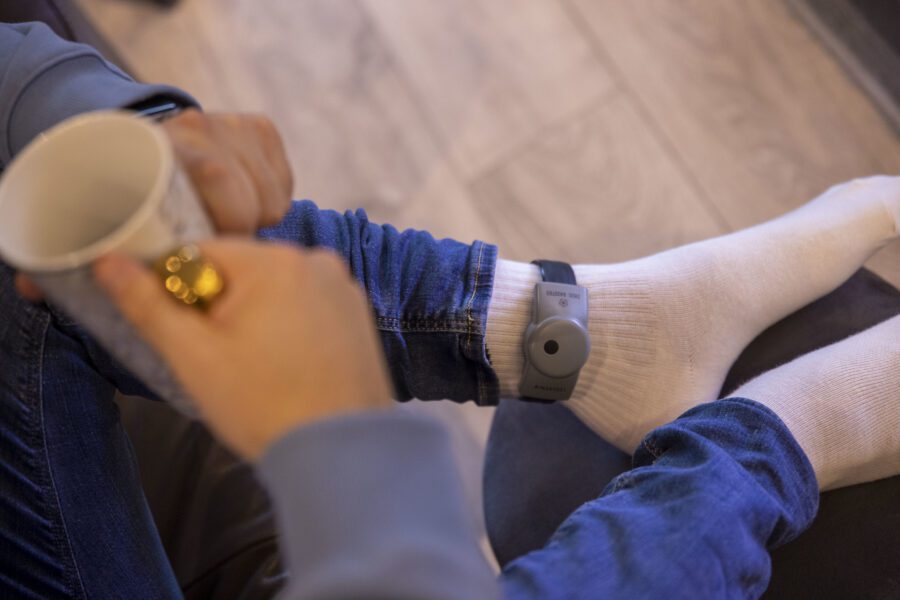How electronic monitoring can help stop people reoffending

Jim Watson served a short prison sentence 12 years ago and then was released on a Home Detention Curfew. This meant he had to wear a tag to serve the last part of his sentence at home.
The experience led him to want to work in the criminal justice system and he then became an academic. He is now a research student at the University of Dundee and an associate lecturer in Criminal Justice at the University of the West of Scotland.
In part one of his blog he described what it was like to wear a tag. Now he explains how he thinks tags can help cut crime.
I wore a tag – or electronic monitor – for fifteen days more than a decade ago and went on to work in the criminal justice system. I joined a Scotland-wide charity that worked with people with convictions to make effective and lasting changes to the criminal justice system. We had some successes with this but like many other third sector organisations, funding became an issue and the charity was eventually dissolved.
I wore my tag when I was released from a short-term prison sentence as part of a Home Detention Curfew – but I’ve since found out much more about the benefits and uses of electronic monitoring. I became an ‘electronic monitoring champion’ – a person with some knowledge and training on the possibilities of this technology to help people stop reoffending.
The Scottish Prison Service ordered my tag. But the courts, the Parole Board and the Scottish Children’s Reporter Administration can also issue tagging orders.
The courts can issue a restriction of liberty order (RLO) or a restricted movement requirement (RMR). The RMR is usually part of a Community Payback Order or as part of a Drug Treatment and Testing Order (DTTO). It can also be used as a condition of bail.

The Parole Board can use electronic monitoring as a requirement of licences that they grant to long term prisoners who are returning to their communities. These are very much developed on an individual basis based upon the risk and/or need of the monitored person. It can be used as part of the multi-agency public protection arrangements.
The Scottish Children’s Reporter Administration (SCRA), which was formerly known as the Children’s hearing panel, can impose one type of order in Scotland that is known as a Movement Restriction Condition (MRC). This order will be part of a “wrap around” package for young people called Intensive Support and Monitoring Services (ISMS). This has been designed to offer an alternative to secure accommodation and the protocol covering this will have been done in conjunction with the monitored person’s supervising officer. In the last fiscal year to April 2023, there were 24 such orders granted across Scotland. I have seen the size of the wrist band used to attach the monitor and it’s large. Personally, I am still not sure if this is an appropriate disposal for young people. However, with the lack of secure spaces available it is certainly preferable to sending 16-year-olds to an adult prison.
There are two developments that could potentially enhance the reliability and robustness of electronic monitoring as well as increase the availability of potential community sentences in the future – but aren’t used in a justice setting yet in Scotland. These are GPS monitoring which is done via satellites and is 24/7 location monitoring, and alcohol monitoring given that there is a huge problem with alcohol acting as a trigger for offending behaviours.
A GPS tag is not a new technology as such. The technology has been around for a while it is just never been used in this context for justice in Scotland. Basically, the tag allows for full location monitoring of the person subject to the order. It can also warn the police if the person is entering a place they’re excluded from. It is the same sort of tech that everyone carries with them in their mobile phones.
There is flexibility within this system to only monitor people for part of the day if that is all that is required. People can be incentivised to reduce their hours for good behaviour. The tag can also be set to vibrate if the person enters an excluded area to remind them not to go any further and to move out of the exclusion zone. This breach will also be notified to the monitoring officers immediately.
Alcohol monitoring is available in two formats – periodic breath monitoring and continuous alcohol monitoring. The periodic breath monitor is a handheld device used to periodically take a breath sample and the results are uploaded to the control centre. It has facial recognition attached to the device’s camera so you cannot really cheat by getting someone else to breathe into it for you. Continuous alcohol monitoring measures alcohol in the blood from being in contact with your skin. Data from the skin sensors is uploaded to the control centre.
Neither of these two will be a silver bullet to reducing reoffending or for controlling behaviour. However, with the right support packages in place from criminal justice social work or a third sector organisation, it is easy to see where they could potentially be put to good use. They could help increase numbers on Home Detention Curfew back to previous levels, as well as allowing the judiciary more scope to become more progressive and creative when using bail rather than remanding people in prison to await their trial. These tags would also offer some reassurance to victims whilst they await the judicial processes to be carried out.
Electronic monitoring is most definitely a punishment, and I can testify to that. However, it can also be productively utilised instead of someone being held on remand in prison. What is also needed is a societal change in attitudes – prison does not automatically need to be the first-choice option when sentencing people or putting them on remand rather than granting bail. We should be thinking ‘community first’ where it’s safe. These technologies allow us to be more progressive and this in turn will help reduce the strains and pressures on a prison system that is already suffering from overcrowding. Reducing the prison population in this manner will allow more work to be done in terms of rehabilitation of those who are sent to prison. This will lead to a fall in reoffending and a fall in potential future victims. Surely, we can all agree we should be aiming for this laudable and worthwhile target.
- Read part one of Jim’s blogs about his experiences with electronic monitoring
